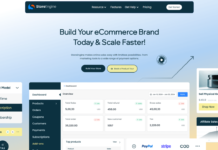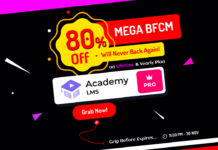Do you have goods or services for sale? Where do you begin when trying to monetize your WordPress website? Stop fretting. This WooCommerce for Beginners tutorial will teach you how to create a standard WordPress website into an online store.
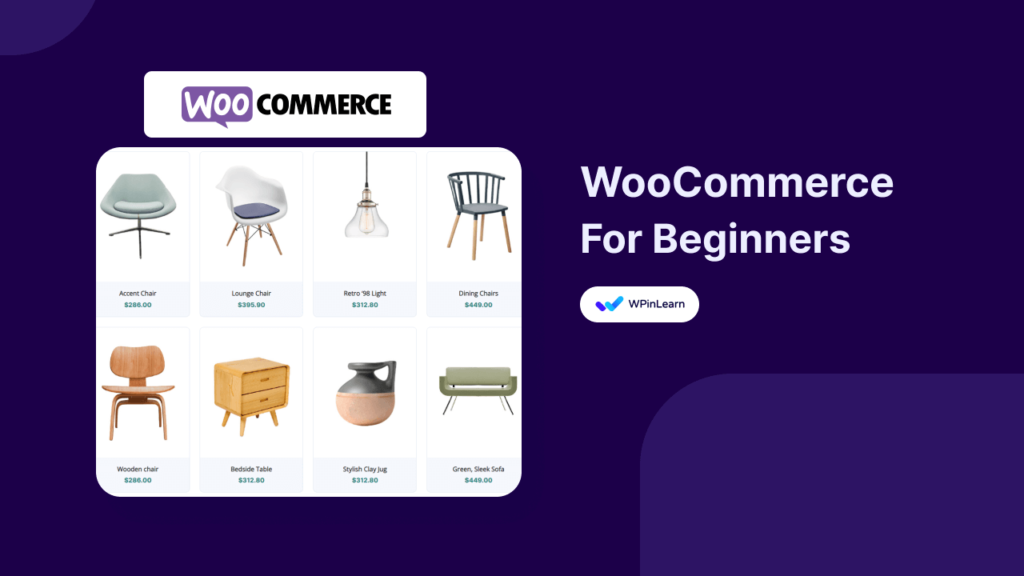
A WordPress eCommerce plugin called WooCommerce is free to use. It serves as a platform for both modest and substantial Internet enterprises. A wide range of tools is available with WooCommerce, including various shipping and payment options, flexible items, and much more.
What WooCommerce is, why you need it, and how to use it are all topics covered in this blog post-WooCommerce for beginners.
Table of Contents
WooCommerce At a Glance
A free and open-source e-commerce plugin for WordPress is called WooCommerce. WooCommerce is used by 20.2% of all WordPress-powered websites. WooThemes first made WooCommerce available in 2011. The company that created WordPress, Automattic, acquired it in 2015.
As a result, it is the largest subcategory of WordPress websites. In the WordPress plugin database, the WooCommerce plugin has over 5 million active installations. WooCommerce users can open and quickly develop an online store to sell tangible and intangible goods and take various payments.
Users of WooCommerce have access to a wide range of themes and plugins, providing for substantial customization and flexibility. Users of the platform may follow the success of their stores and make data-driven choices thanks to the platform’s rich analytics and reports.
Start Setting Up WooCommerce With Your WordPress Website
It’s easy to set up WooCommerce. The plugin includes a setup wizard to help you get started by guiding you through the fundamentals.
Just in case, let’s go over setup now.
An outline of the procedures you must follow is provided below:
Installing and Activating WooCommerce
Ready to begin using WooCommerce to sell products online? Installing the plugin of WooCommerce is the initial step, and it’s simple to accomplish.
The plugin is available for direct download from the WordPress repository to your website. Just log into your WordPress dashboard, choose the Plugins tab, and click Add New to download it immediately to your website.
Then, type “WooCommerce” into the search field and press Enter. Click Install Now to begin the installation procedure when the plugin displays. Verify that Automattic is shown as the plugin’s creator, as demonstrated in the screenshot below:
Activate it by clicking the button after completing the installation. WooCommerce will start the configuration wizard once the procedure is finished.
Setting Up WooCommerce
You will be guided by the setup wizard as you configure the essential parameters for your store. These initial steps to properly set up your shop are optional, but we advise doing so. Basic inquiries regarding your shop are made on the wizard’s initial page.
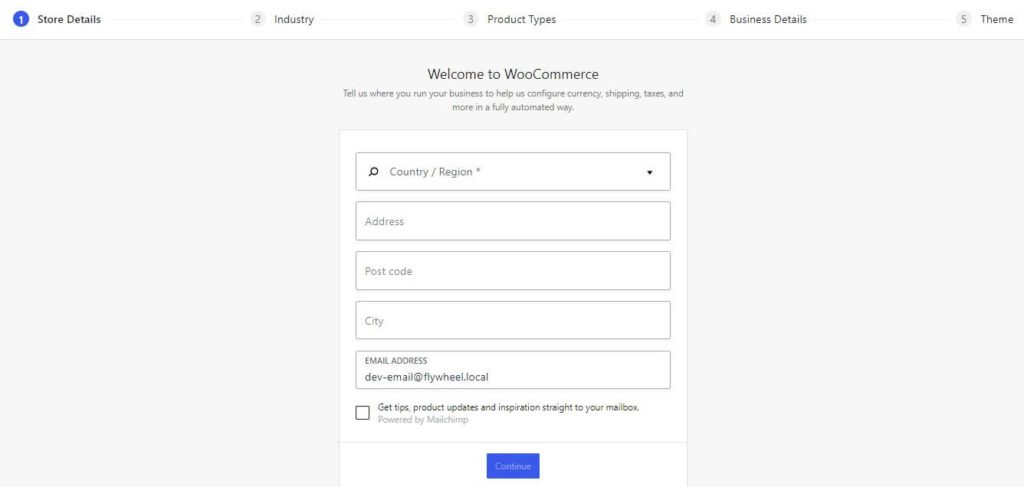
For setup, adhere to the WooCommerce guide below:
Add your nation, address, and zip code to the store details. Next, determining the industry in which your WooCommerce business operates is the next step. Make sure to review every application.
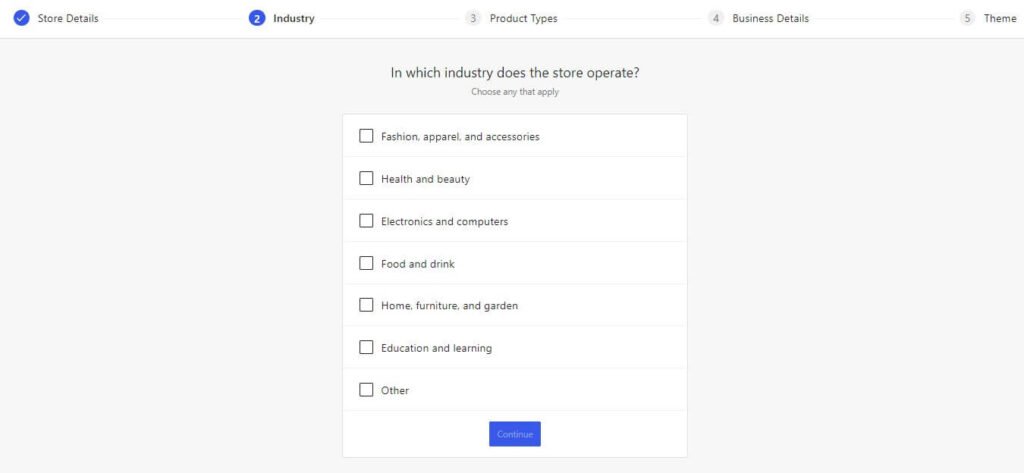
Then, in Product Types select the type of products that will be listed. And again, make sure to check any that apply.
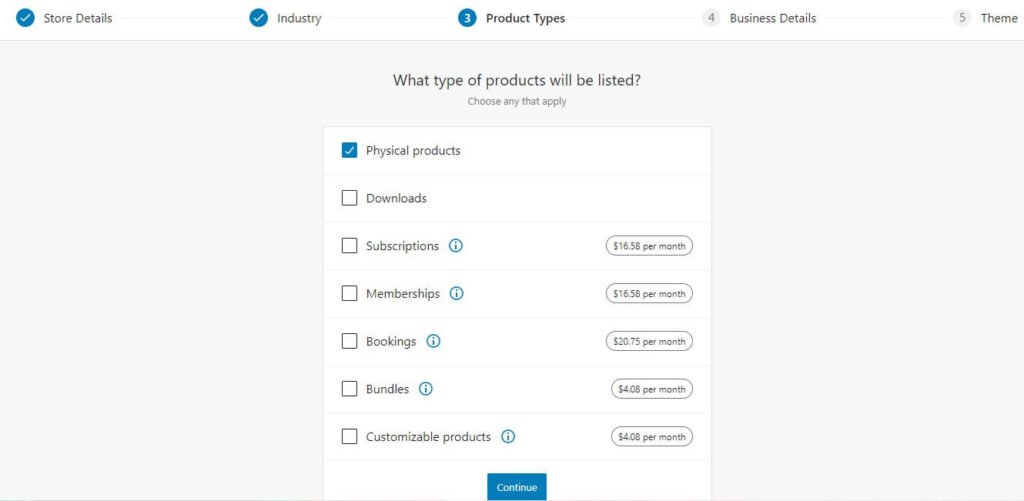
You must provide some information about your business on the next screen. Decide how many goods you want to display.
Selecting an eCommerce theme to show your items is the next step. For WordPress, there are a ton of themes available, both free and premium.
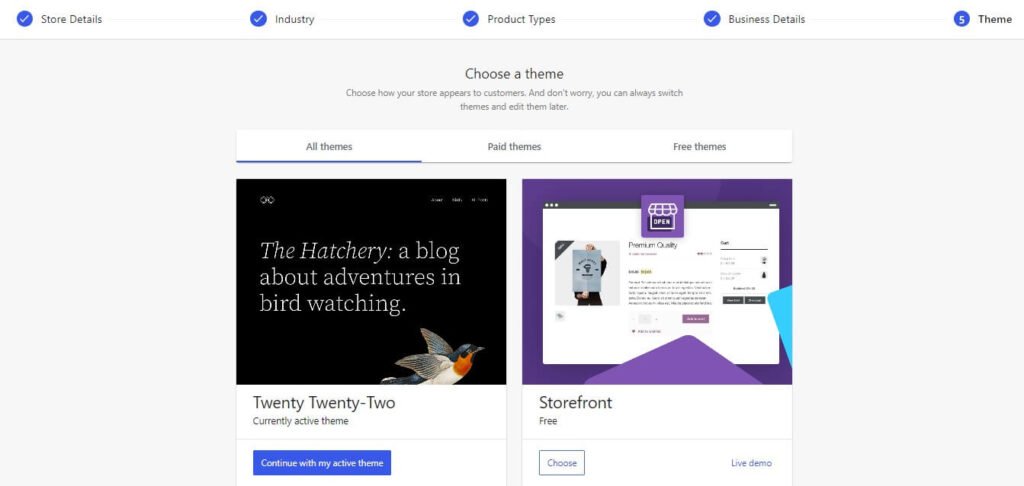
You can see that the setup is not quite finished from the screenshot.
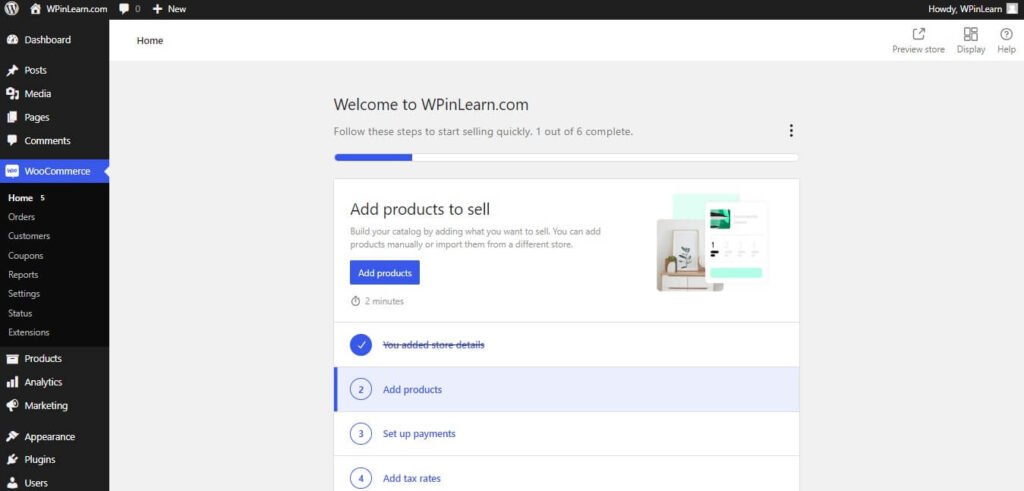
Add a Product to Your WooCommerce Store
The procedure for adding a new post to your WordPress blog is identical to adding a WooCommerce product to your website. To add a WooCommerce product to your WordPress eCommerce store, follow the below steps.
Click on Products, which is listed under WooCommerce, to get started. After that, select “Add New.” Next, provide the name of your product and a thorough description that includes all pertinent details.
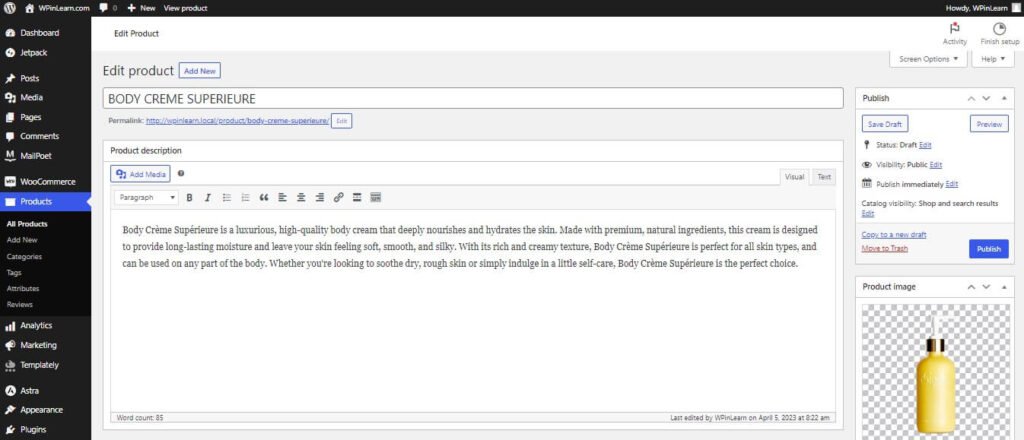
Choose the product type in the Product Data section by scrolling down. Next, provide other details such as the price, quantity, inventory, delivery, related items, etc. If your items are non-physical and don’t require shipment, click the “Virtual“ box. For things like software or files, choose the Downloadable Box.
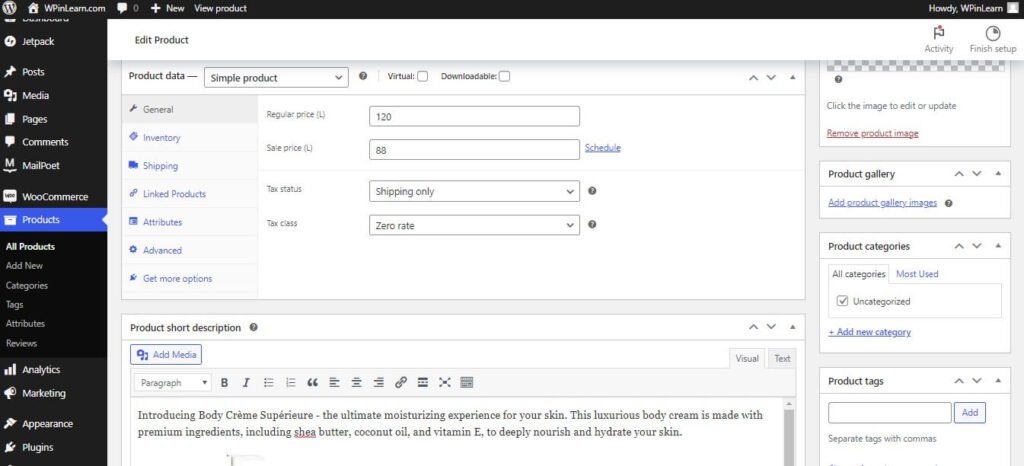
Here are some steps for completing the product:
- Give your product a price after that, and provide a succinct description that will appear beneath the product name.
- Add the Product categories on the right side. Create a new category, or add it to an existing Parent category.
- You have the choice of labeling your items with product tags, which makes it simpler for buyers to discover them.
- You may upload or assign a picture to your product in the Product Image section.
- You may add more photographs to your product in the product gallery.
- After you are satisfied with the settings, click Publish or save the draft before checking the preview.
Now that you have completed adding a new product, scroll up and click on “Publish“ or “Preview“ your added product on your WooCommerce store.
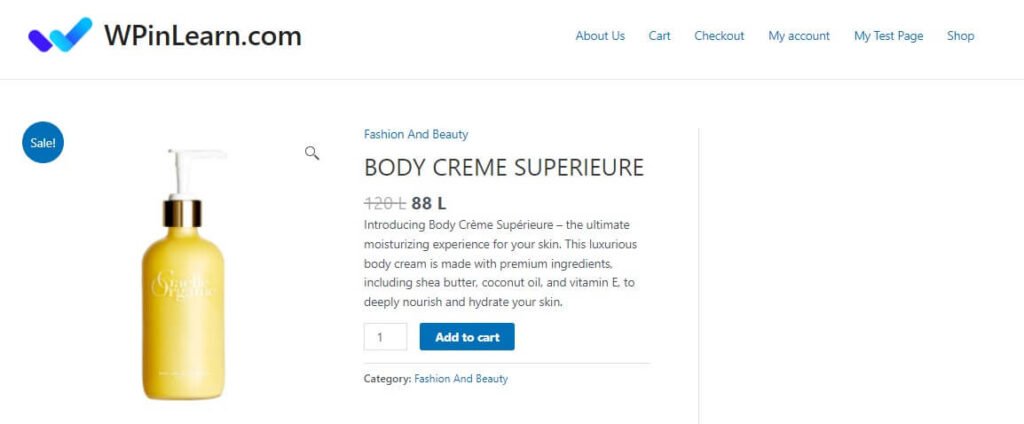
And in this way, you can add products to your store individually. And after all the products are added, all your products will be visible on all your shop pages. And how well your product will look depends on your theme. So you may read our guide on the best eCommerce themes for WordPress. This will help you out from choose the best one for you.
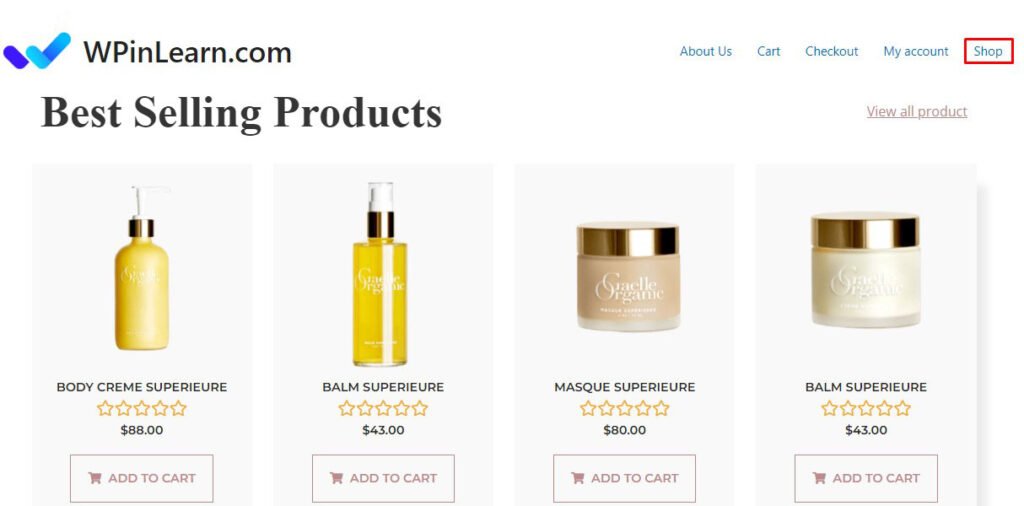
Set Up Payments Method
Return to WooCommerce > Home after all of your goods have been uploaded. Click “Set up payments” to begin.
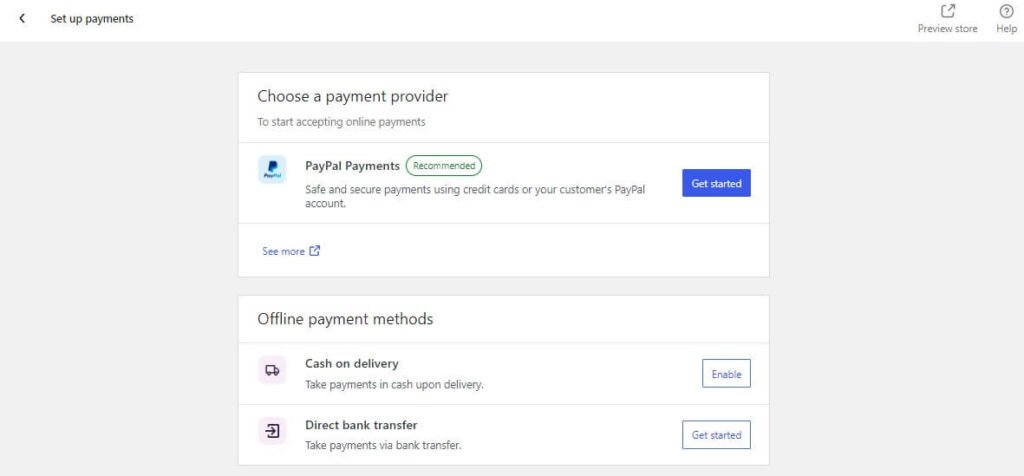
You must decide which payment processor you wish to utilize for your shop. Direct bank transfers, cash on delivery, PayPal, credit cards, and more options are available.
WooCommerce Settings
You may modify your online store’s fundamental settings, including location, currency, and API settings, on the Settings page. But before making any major adjustments, make sure to hover over the question mark next to each setting to read a brief description. Let’s now briefly review what may be altered in each of the accessible tabs.
- General Tab – Important settings like store location, currency, payment methods, tax choices, and more may be found on this tab. You may choose whether to offer free delivery, show visitor notifications, and manage taxes.
- Products Tab – You may modify product parameters using the Products tab according to your needs. This area offers everything you need, including the ability to establish measurement units, manage inventory, enable or disable reviews, and customize file download options for downloadables.
- Tax Tab – You may activate automated tax management, include or remove taxes from the displayed price, establish a standard, reduced, or zero tax rates for new locations, and more in the Tax tab.
- Shipping Tab – Many shipping choices are available under this category, including free shipping, pricing, free shipping zones, and more. Moreover, you may define various delivery costs for various places.
- Payments Tab – You may manage payment gateways and select whether or not to activate them based on your preferences on the Payments page.
- Accounts & Privacy Tab – This area allows you to manage customer account settings, such as whether or not visitors may check out without creating an account. Moreover, you may select how long you want to keep client data on file and establish a policy statement to present upon account registration.
- Emails Tab – You may set up your store’s email settings, including email templates and specifics, under the Emails page. The emails you send to customers can also be modified.
- Integration Tab – You may take use of Facebook’s services, like Messenger integration, exposing your Facebook advertisements to potential customers, and setting up tracking pixels, by connecting your store with Facebook.
- Advanced Tab – You may update the settings on preset pages, activate or disable the WooCommerce API, approve access for other apps, and manage their rights in the Advanced tab. In this area, you may also configure webhooks.
Why You Should Choose WooCommerce For Your Online Store?
Among the many eCommerce plugins you can use for free, WooCommerce in WordPress is considered to be at the top of the list. Here’s why:
- The abundance of both free and paid plugins is what makes WooCommerce stand out the most. They provide you the option to add a huge selection of features and integrations to your WooCommerce website.
- You may connect with the millions of WordPress users using it, and it enables a smooth connection with WordPress.
- WooCommerce guards against any third-party platform getting access to your data. Moreover, it protects the transactions that customers and you make.
- WooCommerce may accompany you on the wave whether it is little or great, few or numerous.
- A huge and expanding international community. Almost 350 contributions and 5 million installs of WooCommerce have been made so far.
- WooCommerce offers thorough documentation and guidance on a variety of subjects, including setup, SSL, theming, snippets, and others.
- Tons of ready templates for Gutenberg and Elementor available for WooCommerce platform.
WooCommerce is undoubtedly a fantastic solution for converting WordPress into an eCommerce website with all the features. The nicest thing about it is that you can sell your goods online without having a strong background in programming. This WooCommerce guide should assist you in setting up and maintaining your online store.
We hope you have enjoyed this WooCommerce for beginners complete guide. If you liked this, then please subscribe to the WPinLearn YouTube Channel for WordPress video tutorials. And join the WPinLearn community and follow us on Twitter.
Frequently Asked Questions
Is WooCommerce Free to Use?
Yes, WooCommerce is free to use. Nevertheless, there can be fees for any other extensions or outside services you decide to include in your WooCommerce shop.
How Many Product Items Can WooCommerce Handle at Once?
WooCommerce supports an infinite number of products. The performance of your store won’t be affected by the limitless number of goods you add.
Is WooCommerce the Best Plugin for an E-commerce Platform?
Yes, WooCommerce is the best plugin for an e-commerce platform built with WordPress.

